 USS HUE CITY CG 66 in the Arabian Gulf 2002. “I wish to have no Connection with any Ship that does not Sail fast for I intend to go in harm’s way.” John Paul Jones
USS HUE CITY CG 66 in the Arabian Gulf 2002. “I wish to have no Connection with any Ship that does not Sail fast for I intend to go in harm’s way.” John Paul Jones
“Without a decisive naval force we can do nothing definitive, and with it, everything honorable and glorious.” President George Washington
“A good Navy is not a provocation to war. It is the surest guaranty of peace.” President Theodore Roosevelt
“A powerful Navy we have always regarded as our proper and natural means of defense; and it has always been of defense that we have thought, never of aggression or of conquest. But who shall tell us now what sort of Navy to build? We shall take leave to be strong upon the seas, in the future as in the past; and there will be no thought of offense or provocation in that. Our ships are our natural bulwarks.” President Woodrow Wilson
“Events of October 1962 indicated, as they had all through history, that control of the sea means security. Control of the seas can mean peace. Control of the seas can mean victory. The United States must control the seas if it is to protect your security….” President John F. Kennedy
There are a great many debates in Congress and the Pentagon regarding the current and future military budgets in light of the massive budget deficits and economic crisis facing the nation. Complicating the issue is our massive commitment to land campaigns that contribute little to the long term national security of the United States and its friends. These wars constrain our diplomatic military and economic ability to respond to other crises at home and around the world be they military threats, terrorism or natural or man made disasters.
Until the mid 20th Century theUnited States viewed the land forces when used abroad as expeditionary forces which were employed overseas for relatively short periods of times of combat. The mission and strategy was to fight the war, bring all or most of the forces home, assist with security as needed and depend on a naval presence to show the flag without a continued large “boots on the ground” presence. The two times that we have elected to fight protracted ground wars with no definable condition of victory we have come out weaker than we went in. This was the case inVietnam a war which badly divided the nation and nearly destroyed the military as a viable force. The present campaign in Afghanistan and the war in Iraq which is close to ending have the potential to do the same.
In the prosecuting the Global War on Terror which was launched in response to the attacks of September 11th 2001 we have for the most costly and historically flawed ways to use an American Army. In doing so we have had to invest a huge amount of our expenditures simply to maintain a force to keep the status quo in a country that will turn on us as soon as it convenient to do so.
In the process of focusing on these aspects of this war we have forgotten the more crucial long term aspects of national security which can only be addressed by maritime power. This power includes the military might of the Navy and Marine Corps team but also includes our Merchant Marine and Coast Guard.
Ninety percent of world trade is transported by ship via sea lanes that have choke points such as the Strait of Hormuz,Strait of Malacca, the Bab El Mendeb and the Horn of Africa, and the Strait of Gibraltar. Likewise other traffic must pass through the South China Sea, the Taiwan Straits or around Cape Horn. Then there are the two major maritime canals the Panama and Suez Canals. Terrorists, pirates, rogue nations and ascending Naval powers such asChinapose real threats in all of these critical maritime commerce choke points.
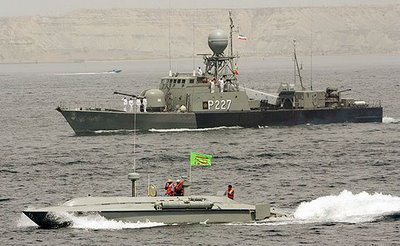


 Real and potential threats to the choke points: Iranian Naval and Revolutionary Guard Naval forces, Somali pirates, the new Chinese aircraft carrier and a Pakistani Navy that may become an enemy overnight
Real and potential threats to the choke points: Iranian Naval and Revolutionary Guard Naval forces, Somali pirates, the new Chinese aircraft carrier and a Pakistani Navy that may become an enemy overnight
Most of the world’s population lives in what are called the littorals, the areas of land adjacent to oceans and major waterways. Likewise most industry is located in these areas. Most of these populations and industries are also in areas under the same type of threats as the sea lanes and choke points. Simply put the sea and the littorals are much more important to this country and the world than landlocked Afghanistan. They also are much more easily influenced by naval power that is not bound to land bases in nations where governments and their policy to the United Statesand our friends can change overnight and which large land armies would have minimal impact.
The United States Navy has been and still is the world’s preeminent naval power. It will likely remain so for the foreseeable future but the navy is strained. Since 2001 it has shrunk in size, shed some 52,000 sailors and seen its scope of responsibility and operational tempo increase putting greater strain on the ships, aircraft and personnel remaining. Ships are aging, maintenance was deferred and the planned new construction has not materialized. The Ticonderoga Class Guided Missile Cruisers are nearing an average age of 20 years, our carriers average 23 years old, many of our submarines are nearing the end of their projected service lives and some other ships are far older.
Ship classes like the Freedom and Independence class Littoral Combat Ships (LCS), San Antonio Class Landing Ships (LPD) and the DD-1000 Zumwalt Class are badly over budget, plagued with technical and workmanship issue and are behind in production.
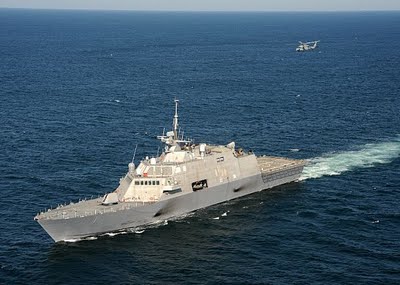 USS Freedom (above) and USS Independence Littoral Combat Ships
USS Freedom (above) and USS Independence Littoral Combat Ships
The LCS in particular seems like a bad investment, the ships are undermanned and under armed, planned weapons modules are not in production and they are not designed for survivability. In effect they are large fast ships with almost no offensive or defensive capabilities that would be hard pressed to survive in a fight with any current or future Corvette or Frigate fielded by an opposing naval force. In order to be effective they need heavier armament and larger crews and need a redesign to improve their survivability. It makes no sense to spend more than half a billion dollars each on ships that are not survivable and cannot fulfill their intended missions. A better choice would be something similar to the Dutch De Zeven Provincien German Sachsen or the French Lafayette Class frigates which have a heavy armament and good endurance or the smaller and cheaper German Braunschweig class Corvettes.
The Zumwalts are 14,000 ton “Destroyers” that were designed as a replacement for the battleship. Originally 32 were planned but the high cost and multiple problems associated with the design. These issues have included such things as seaworthiness due to their hull form and other hull issues, its integrated advanced electro-magnetic propulsion system and its surface and air warfare capabilities. Their armament has been an issue since the beginning as they cannot meet the standards of the Aegis equipped Cruisers and DDGs and cannot support the Ballistic Missile Defense capabilities of those ships. Their naval gunfire support capability which was advertised as one of their main selling points is woeful. They are to be equipped with two 155mm long range naval guns designed to use a “smart” munitions. The ships will carry a limited supply of shells for these guns and because of the need for extended range and guidance capabilities the shells will have a smaller charge than their land based counterparts. They will have only two-thirds of the VLS cells than Ticonderoga class ships meaning that they can carry few missiles of all types. It is likely that the Tomahawk cruise missile will comprise the bulk of their missile armament but if one wants a ship that’s only significant capability is launching Tomahawks then there are many other ideas which are more economical and can carry far more missiles than the Zumwalts. One of these was the Arsenal ship which was designed to carry 500 Tomahawks on a stealthy platform that requires a small crew and had an estimated cost of 500-800 million dollars. It was cancelled in favor of the project that eventually turned into the Zumwalt class. The DD-1000 program began with the DD-21 program in 1994 and the first ship may not enter service until 2015. The cost of just two of these ships has grown exponentially to 6.6 billion as of 2011. The two ships under construction have little place in the current or future Navy and would likely serve as technology test beds.
While we have increased the numbers and continued the production of the highly successful Arleigh Burke class guided missile destroyers (DDG) and Wasp class Amphibious Assault ships (LHD) it is not enough to compensate for the continued attrition. If worst case budget projections occur the Navy could experience massive cuts without any decrease in maritime threats or operational commitments. The Coast Guard is in even worse shape.
The most important aspect of national defense, free trade and humanitarian assistance in the coming years are America’s Navy, Marine Corps, Coast Guard and Merchant Marine. Without a strong Navy and the other components of maritime power we are at the mercy of tin-horned dictators, pirates and terrorists who live and operate in the most vital areas of the world’s maritime transportation network.
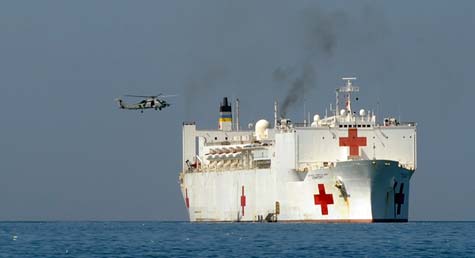 Humanitarian assistance: USNS Comfort off Haiti
Humanitarian assistance: USNS Comfort off Haiti
As our political leaders meet in the coming weeks and months decisions will be reached in matters of national security. They will be based budget considerations alone as we have not operated on a clearly defined national security strategy since the end of the Cold War. Force structure has to be decided based on the over arching national strategy and broad brushed and un-thought out cuts are a recipe for disaster.
History tells us this. Following our Revolution the nation was deep in debt and eliminated the Navy. Since our merchant shipping was no longer protected by the Royal Navy and the treaty withFrancewas allowed to lapse American ships became easy prey for the Barbary Pirates. Rather than build a navy to protect American citizens and shipping the nation paid “tribute” to dictators which amounted to tens of millions of dollars until Thomas Jefferson sent the new re-established Navy to counter the threat. Our history and that of other maritime powers such asGreat Britainand theNetherlandsprovide many precedents for this use of power.
What needs to happen now is for the LCS ships and Zumwalt class production to end with the current ships building. No carriers except the 50 year old USS Enterprise should be decommissioned until a full up national strategy review is completed and agreed to by both political parties. That strategy needs to actually prioritize the most important areas of engagement that the military should focus its efforts. The Middle East will remain important but will fade as Asia continues to gain importance.
Regarding other ship classes much needs to happen. DDG production should be stepped up and an affordable yet fully capable replacement to the Ticonderoga class designed, to include the ability to conduct ballistic missile defense. A diesel electric attack submarine needs to be fielded to complement the Virginia Class attack boats. A Light Fleet Aircraft Carrier design should be designed and produced to compliment the Nimitz and Ford Class Carriers now in commission or building. The Navy should design or take an off the shelf Corvette or small Frigate type ship to fill the role envisioned by the LCS. Such ships should be designed for specific tasks to avoid the massive cost overruns and simplify production. When one remembers that it as the United States Navy that first developed the Destroyer Escort type ship to fill a specific role such an undertaking should be well within ship designer and capabilities so long as they do not try to “gold plate” the type and make it a jack of all trades and master of none ship. Other types of ship should be studied to include smaller but still capable aircraft carriers and new amphibious ships to support the Marine Expeditionary forces.
Ships need to be designed with combat power, survivability as the first priorities and they need to be affordable and easy to mass produce. Designs do not need to be over thought. George Patton’s adage “a good plan violently executed now is better than a perfect plan next week” applies today for this nation and the Navy. To adapt Patton’s adage I say that “a combat effective and survivable ship class that we can afford and mass produce now is better than a perfect ship that bankrupts us and cannot be produced in the numbers needed to secure the seas.”
The Navy is the American Armed Force of the Future. Of all the Armed Services the Navy offers the United States the ability to protect its interests abroad and homeland security without the need to base large numbers of ground forces overseas. Naval forces are flexible, are easily sustainable and conduct security, combat and humanitarian operations better and more affordably than any armed service in the world. When coupled with the expeditionary capability of the Marines offer a force that affordably provides national security. George Washington, John Adams, Theodore Roosevelt and Franklin Delano Roosevelt all knew this. I do hope that the current Administration, Congress and their successors will not allow the current superiority that we enjoy on the high seas to decay just as our greatest economic and military competitors build up their naval capabilities and the threat of terrorists, pirates and the small but dangerous navies of rogue states threaten the sea lanes that are absolutely vital to our economy and national security.
The Navy is also the least provocative armed service and history has repeatedly shown that naval forces are a deterrent to war and guarantee of peace.
On that last note…
Peace
Padre Steve+



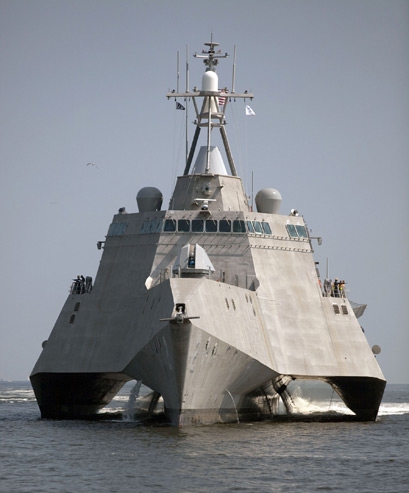
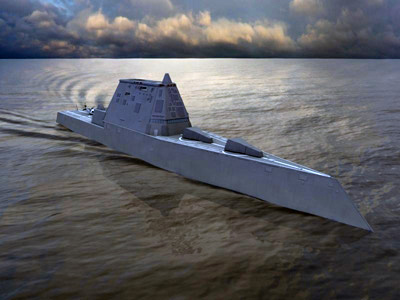



Interesting that you mention a smaller version of the current fleet carrier. I’ve been pushing on various forums for a modern-day equivalent of the WW2 CVLs (the ones built on CL hulls). With the modern F-18 able to fulfill both attack and fighter roles, you’d get a good deal of versatile firepower out of a smaller air group than with dedicated attack, fighter, and recon vehicles, and the smaller ships would be cheaper both to build and to run. And I share your dislike of the LCS – I’d prefer finding something that would work both for the large Coast Guard vessel (WMEC type?) and LCS vessel – though most boards I’ve been on seem to favour the “De Zeven”s you mentioned.
What are your thoughts on a half-gun, half-missile “gunboat” style of close-support ship, something with 4-6 guns of 5-6″ calibre, plus a VLS or two aft and 30mm “GoalKeeper” CIWS and whatever missile for air defense? I’m thinking a brown-water ship that could do heavy gunfire, precision-target missile fire, and air-defense for an amphibious landing, much the way the Navy used destroyers off Normandy or Okinawa in WW2. I’d love to hear your thoughts! 🙂
Reblogged this on Padresteve's World…Musings of a Passionate Moderate and commented:
Friends of Padre Steve’s World,
After 10 weeks I am about to complete the Joint Combined Wafighting School at the Joint Forces Staff College. Next week I will start my faculty orientation and beginning preparing for my first course which begins in January. The JCWS school is for planners on Joint Staffs, most of the students will go to assignments working on the staffs of the various Joint Commands as well as other positions on the Joint Staff. It is the second level of Joint Professional Military Education. All of the officers present have already completed either the Naval War College, Air War College, Command and General Staff College or Marine Corps Command and Staff College and are Majors, Lieutenant Colonels, Colonels, of Navy/Coast Guard Lieutenant Commanders, Commanders or Captains. Almost all of us have at least one graduate degree. As my class graduates we will be involved in the decision making process of how our forces will function in light of the end of the Afghanistan and Iraq Wars, the looming threat of Sequestration, reductions in force and how to successfully do what we are supposed to do in a resource constrained environment. It will be a challenge. In light of the fact that cuts will have to be made strategic decisions need to be made as to how the Department of Defense spends the money provided to defend the nation. In light of that I am re-publishing an article that I wrote a bit over two years ago. I think that it is even more appropriate today. Have a great night and peace.
Padre Steve+
Well, if we won’t lose your blogging adventures, than a big hearty WOOHOO! If it WILL cost us your incredible historical insights, well, congrats anyway. Either way. it’s nice to know that we’ll be sending somebody with a positive IQ into such an influential position. And if you want to run any ideas past me (like the old one above, or stuff on alternate energy sources, or whatever), feel free to use me as your sounding board.
And no matter what happens, well done, my friend!